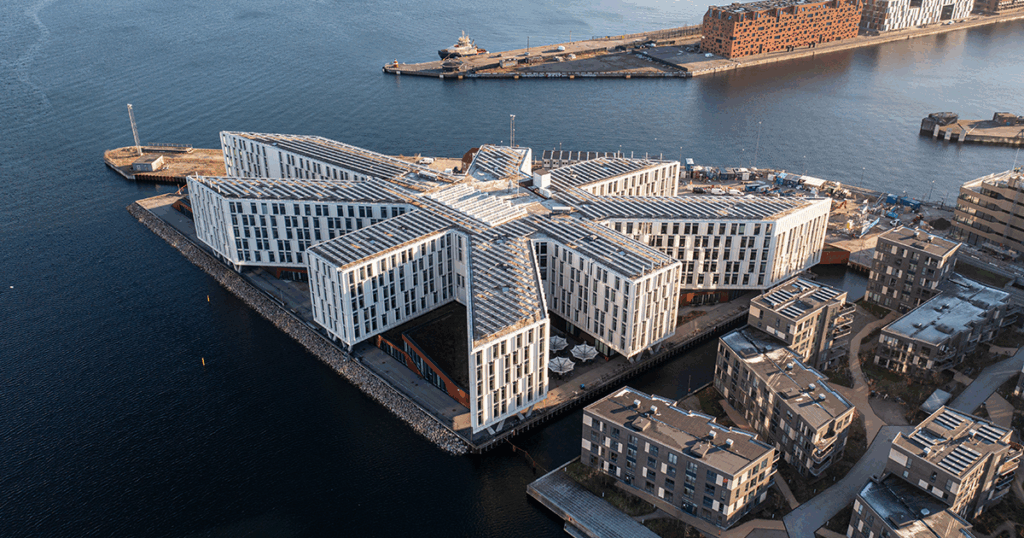Connecting UN Agencies for Global Sustainable Impact — From the UN City to the Rest of the World
UN City Copenhagen | 22 July 2025
Located in Copenhagen’s harbour area, UN City stands as a symbol of sustainability and international cooperation. The distinctive eight-fingered, star-shaped building at Marmorvej 51 stands as a beacon of sustainability and innovation. As one of Scandinavia’s most sustainable buildings, the UN City Copenhagen, which hosts 10 UN agencies, serves as a hub for UN collaboration, innovation and integrated solutions for global good.

Inside the open central space, an impressive staircase connecting five floors stands as a physical and symbolic link for the 2,000 UN staff working within UN City Copenhagen. Across campuses, it helps encourage idea and knowledge exchanges between UN agencies that often leads to new initiatives based on shared goals.
One such initiative is an Inter-Agency Working Group, established to advance green energy transition globally by enhancing collaboration between seven UN agencies: the United Nations Development Programme (UNDP), the Food and Agriculture Organization (FAO), the United Nations High Commissioner for Refugees (UNHCR), the United Nations International Children’s Emergency Fund (UNICEF), the United Nations Institute for Training and Research (UNITAR), the United Nations Office for Project Services (UNOPS), the World Food Programme (WFP).
Another example is the collaboration between UNOPS and UNDP to implement Smart Facilities Kits in 45 offices globally. The kits enable real-time monitoring of energy use and environmental factors, helping reduce emissions and improve efficiency. The sensors provide a data-driven understanding of energy footprint within the UNOPS offices and how everyday choices affect total energy consumption.

In Kenya, WFP and UNDP is implementing a 200 kilowatts solar energy system for one of WFP’s refugee camps in Dadaab. This ensures that critical humanitarian operations are both sustainable and cost-effective, expecting to reduce CO₂ emissions by 240,000 tonnes and cut costs by over US$500,000 annually.
In Zimbabwe, UNHCR is enhancing its environmental sustainability in partnership with UNDP by installing a 40 kilowatts solar energy system to power its Zimbabwe office. The solar energy system significantly reduces its reliance on generators, lowering CO₂ emissions by 32.8 tonnes annually.
Fuelled by their joint presence in UN City Copenhagen, these efforts showcase the power of UN agencies working together to drive global progress.
This article was drafted by UNDP Nordic Representation Office in collaboration with UNDP ITM. For more information about UN City, please visit: https://un.dk/about-uncity/
